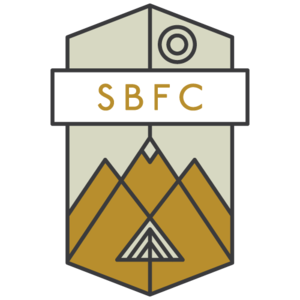Connor Adams
Lead Wilderness Steward
September 15-22
Nez Perce-Clearwater National Forests
#421 East Moose Creek
Brushing is definitely among the least sexy and exciting things we do at SBFC, but also one of the most vital. Cutting back small shrubs with a pair of loppers isn’t quite as cool as pulling a crosscut saw or swinging an axe, but a trail can be rendered basically unusable without sufficient brushing. For the last hitch of the 2020 season, I joined up with the Trail Crew and we proved just how instrumental it is to an accessible Wilderness. We were tasked with clearing any blowdown on #421, and more importantly, brushing out the very overgrown riparian area of the trail along the upper reaches of East Moose Creek. We left for hitch a day late because smoke from fires in California and Oregon made hard labor outside a risky activity, but on Wednesday we were back in the Wilderness and setting to work.
In my now four years with SBFC, I have seen a lot of the downstream section of the #421 trail, and it remains one of my favorite parts of the Wilderness, but as of this year I had yet to explore the headwaters of East Moose Creek and the surrounding valley, or Lost Horse Cabin up by the trailhead. I’m very grateful I finally got sent on hitch there, as that drainage is even more beautiful and wild than I expected. The cabin was pretty neat, too. We spent the first few days of hitch tangling with some thick spruce blowdown throughout the trail, and with the dull teeth of a crosscut with a full season of trail work on it.
After a few days of clearing, we spent the inevitable rainy day of the hitch hiking out to the junction of #421 and #463 to replace a trail sign that had been scorched and knocked over in a burn since at least 2017, the first time I traveled that trail. It was satisfying to finally fix it after three years of passing by that junction and seeing the helpful little sign lying on its side, unable to accomplish the one task it was designed for. Our tools for this project were limited, and even more limited when our one Pulaski head snapped right off its handle. We didn’t let that stop us though. We gamely dug out the rest of the hole using the jagged end of the Pulaski handle, using our hands to scoop out dirt. Instead of packing in a spud bar on foot for 10 miles, we found the heaviest lodgepole pine snag in the area that we could lift, stripped it of its limbs, and tamped our sign in with that. It wouldn’t do for a hitch rail, but for a trail sign it fit the bill just fine (P.S. nobody tie your horse to that sign). Happy with our resourcefulness, we ended the day by cutting a huge spruce out of the trail that the Trail Crew had left earlier in the season for lack of wedges, nicely putting a bow on their clearing for the year as well.
The rain turned out to be a blessing in disguise, as it snuffed out the smoke in the air and gifted us the first blue sky in at least a week. The rest of the hitch was spent lopping and brushing the first 9 miles of the #421 trail from Twin Lakes Trailhead to just near the junction with #463 at Cox Creek. In my six years of Wilderness work, I have seen some trails with brushier sections, but none with so many and for so long a distance. We put our loppers and hand saws through their paces those last few days, joking and enjoying the sunshine and talking about food (and basically nothing else). Though brushing can be dull and repetitive, it was immensely satisfying to walk that full trail back to Twin Lakes without getting smacked in the face with alder branches or tripping over saplings every 100 feet. The #421 is now clear and waiting for the loving embrace of boots and hooves.





